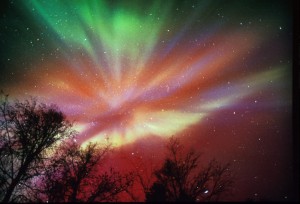Lecture to explore the causes of low aurora activity
January 13, 2011

907-474-5229
1/13/11
Auroral displays in the night sky are one of the pleasures Alaskans look forward to during the long winters. The intensity of the aurora is dependent on particles being emitted from the sun. Solar activity is tracked in cycles and when the sun goes into a minimum, the aurora is visible less frequently. Typically, a solar minimum lasts about one year. However, the current minimum has been going on for more than three years.
On Jan. 18 at 7 p.m., Roger Smith will discuss the effects of the solar minimum that is currently influencing the aurora. Smith, director of the Geophysical Institute and professor of physics at UAF, will present “Auroras at Solar Minimum” in the Westmark Gold Room in Fairbanks. The lecture will kick off the Fairbanks portion of the 2011 Science for Alaska Lecture Series.
Science for Alaska is sponsored by the University of Alaska Fairbanks, the UAF Geophysical Institute and Alyeska Pipeline Service Company. The series runs on Tuesdays through Feb. 22, 2011 and is free to the public.
Hands-on activities for all ages begin at 6 p.m. inside the Gold Room. Families are welcome.
- 30 -
ADDITIONAL CONTACTS: Roger Smith, director of Geophysical Institute director and professor of physics, 907-474-7282, or roger.smith@gi.alaska.edu. Marmian Grimes, UAF public information officer, at 907-474-7902 or via e-mail at marmian.grimes@alaska.edu.
ON THE WEB: http://www.scienceforalaska.com
SS/1-11-11/125-11


